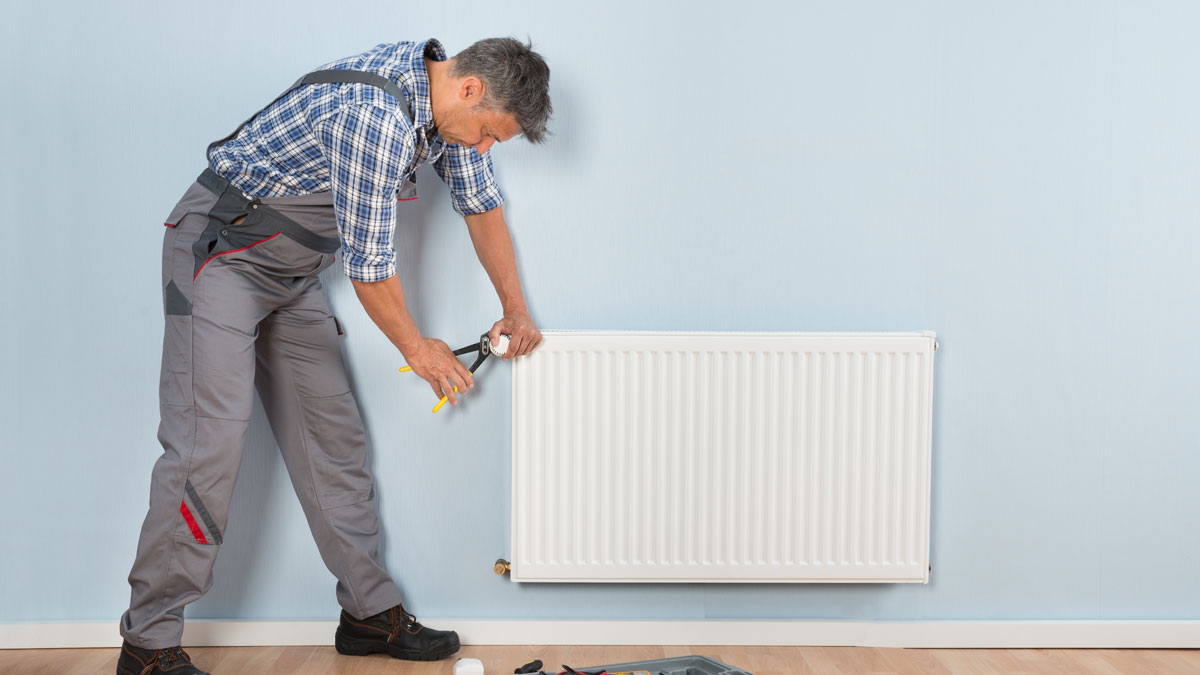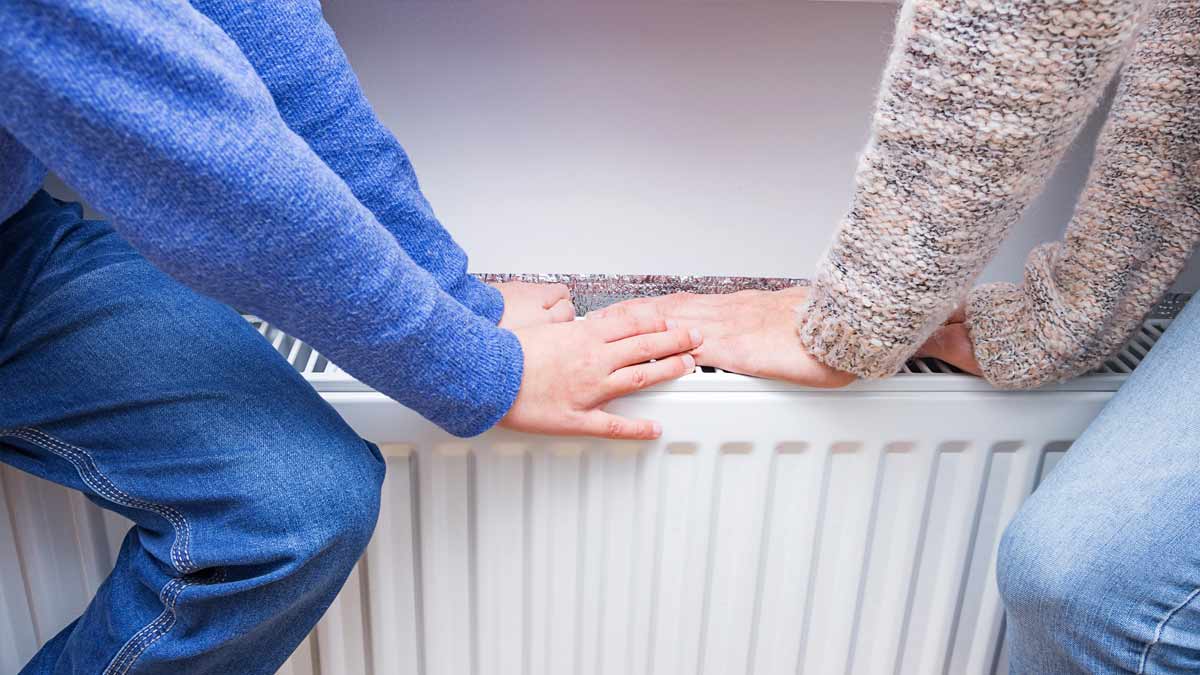One day you might notice that although the heating is on, your radiators are cold and your rooms are getting chillier and chillier. This can have several causes. When the problem is with your central heating, one or several radiators may be affected. In this article, we will first explain the workings of hot-water radiator systems, which are widely used in the UK. We then discuss the most common cases of radiator malfunction and present detailed instructions to deal with each. Note that if you have steam central heating, some of these steps vary which we address in a separate article.
How does a hot-water radiator system work?
Your central heating system works by circulating hot water through pipes that run from your boiler to each radiator. The heat from the water inside the radiator fins is then radiated to the surrounding air (hence the name: radiator), which then makes the space warmer by carrying it to places in a process called convection. After losing most of its heat to the environment, the water, which has now considerably cooled down, returns to the boiler to complete the loop and be heated again for the next cycle.
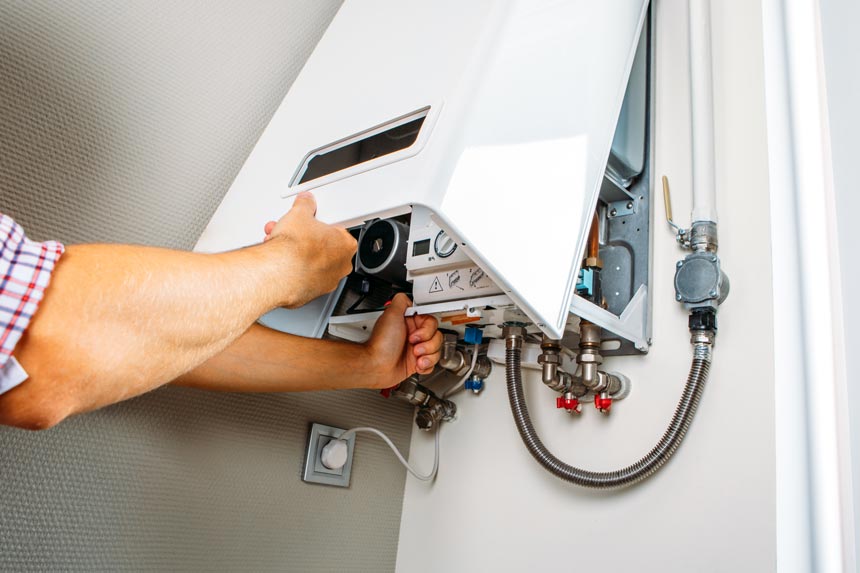
The main components of this system are the boiler, which heats the water in the first place by burning gas or some other fuel, an electrically powered circulator pump, the pipes that carry the water to the radiator and back to the boiler, and obviously the radiators themselves.
The radiators themselves further have the following parts:
- the heat exchangers (fins in the older cast-iron type and panels in the new types)
- the control (inlet) valve, which regulates the water flow into the radiator and can be of either manual or thermostatic (TRV) type
- the lock shield valve, which regulates the water flow out of the radiator and is used to maintain a balanced distribution of water in the system
- the bleed valve, operated by a bleed screw, and responsible for venting trapped air from the system
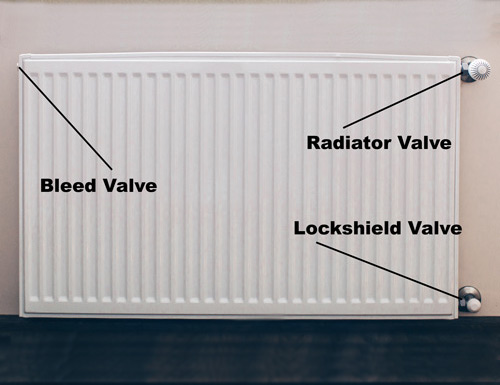

T.Voekler, CC BY-SA 3.0, Thermostatic Radiator Valve
Some radiators may additionally have internal fittings known as flow diverters whose function is to distribute the water evenly inside the radiator thus increasing its efficiency.
Now that we have a clear idea of the workings and the components of the system, let’s look at the various ways it can malfunction and what should be done in each case.
All radiators are warm except one or a few
When the problem is limited to only one radiator or a few of them, the control valve is probably to blame. Inspect the control valve to make sure it is open. In the case of a regular (manual) valve, turn it anti-clockwise all the way to ensure a maximum inflow.
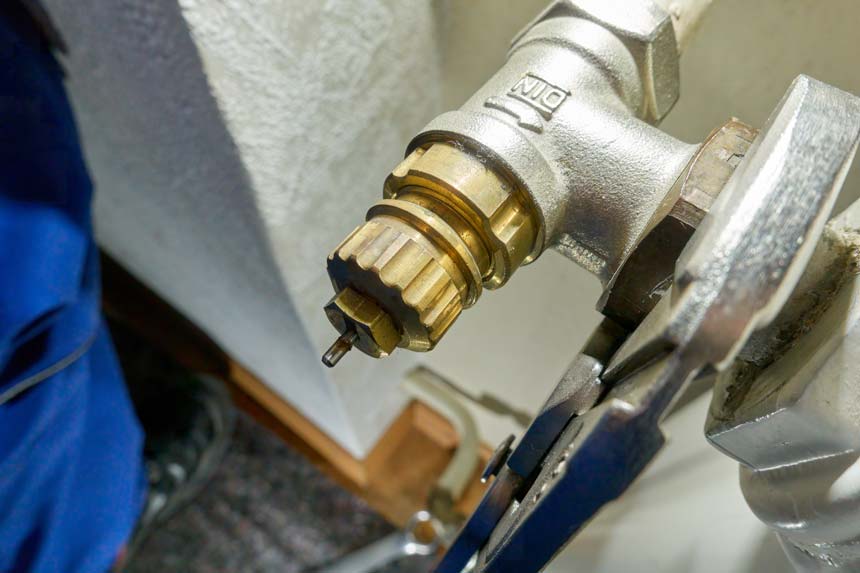
Radiator valve in open status. If you press the central bolt, the valve closes.
TRVs (thermostatic radiator valves) have a pin underneath their cap that can sometimes get stuck in the off position. Remove the cap to reveal the pin and push it in a little bit. If it does not pop out automatically, hit it lightly with a spanner or try to gently pull it out with a pair of pliers to get it unstuck. This should do the trick. You might have to replace the TRV, if the pin remains stuck after pressing.
Another possible cause for this problem is an unbalanced system. When the incoming rate of hot water is not carefully balanced against the outgoing rate of cold water in a radiator, the distribution in the entire system might be affected in a way that prevents hot water from reaching some radiators, especially the ones farther from the boiler. When this happens, the system needs to be balanced by adjusting the lock shield valves. It is recommended to have a trained heating engineer do it for you. If you instead want to do it on your own, take a look at this guide to balancing your radiator.

© Foto: Ra Boe / Resource Identifier / Hydraulischer Abgleich by-Ra Boe
Finally, If you have a separate room thermostat to adjust the room temperature, it might have stopped working. There are many types of these and several things can go wrong with each which are beyond the scope of this article. We discuss the most common issues in a separate article.
The radiator is cold at the top, but warm at the bottom
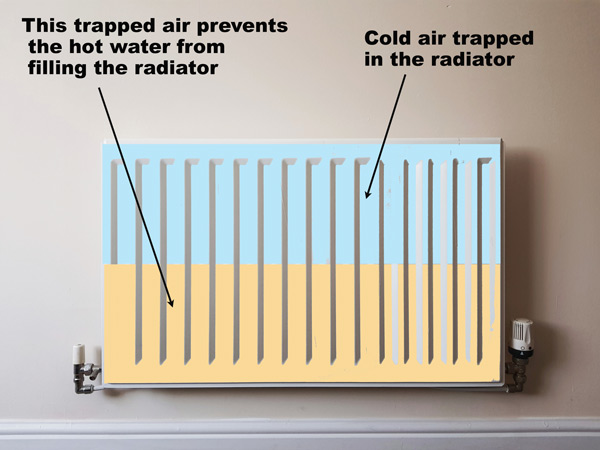
Partial heating only at the bottom of the radiator is a tell-tale sign of air trapped inside your radiator. The solution is fortunately easy. All you need to do in this case, is to bleed it properly. You can easily do it yourself.
If you have already bled the radiator, and it is still not getting hot as it should, it might need a flow diverter. A flow diverter is a small device that is installed between the radiator and the inlet valve. It ensures an even distribution of water inside it and thus more consistent heating. We recommend that you let an expert heating engineer take care of its purchase and installation for you.
The radiator is warm at the top, but cold in the middle or at the bottom
Warm regions at the top with cold patches at the bottom or in the middle, can mean that hot water is flowing in, but cannot freely reach all areas of the radiator. This is frequently due to sludge and dirt accumulating inside, usually at the bottom towards the middle. Hot water can have a corrosive effect on the iron parts inside the fins. Chemical characteristics of the water such as its PH and its hardness, can intensify its corrosive effect. Over time, this effect leads to accumulation of sludge and grime at the bottom of the radiator towards the middle. Eventually limescale and rust flakes build up to such a degree that prevents the free flow of water. At this point you should consider cleaning or flushing your radiators.
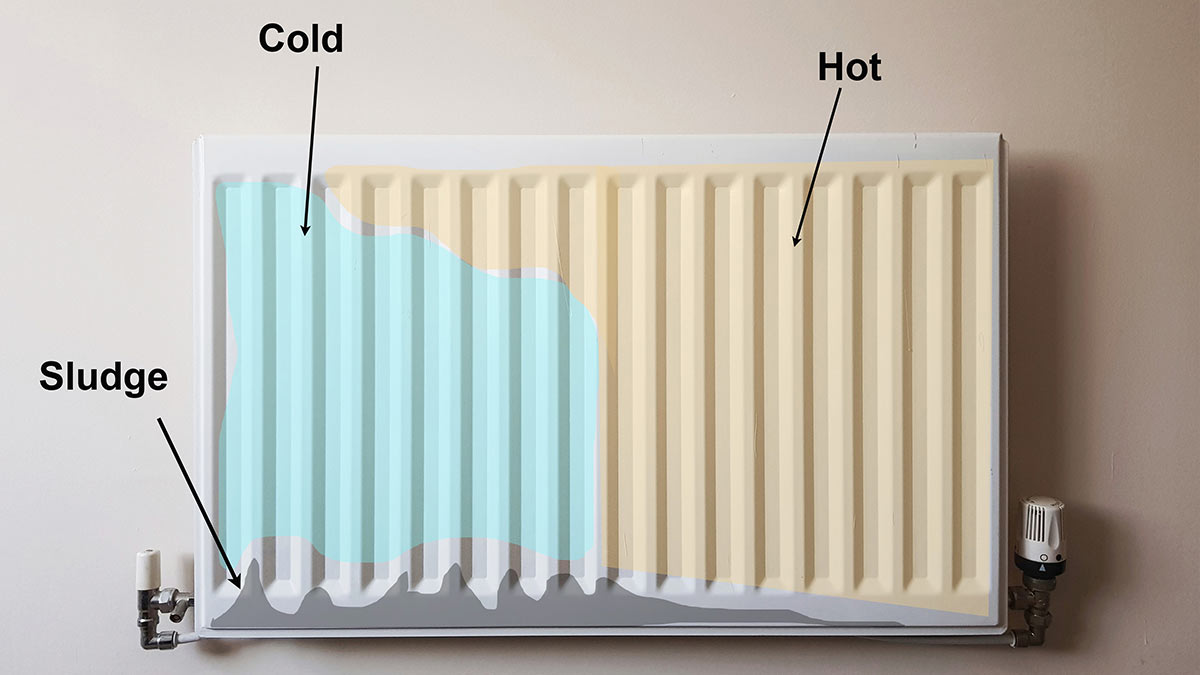
The precise steps to remove the obstruction depend on the type of your central heating system and your radiators. You may only tackle the task yourself, if you have an unpressurized open-vent system. It involves adding some sludge remover fluid to the system. You can read about its details in this article.
In all other cases, or if you are not sure which type of system you have, it is not a DIY job and must be handled by a qualified heating engineer. It is far too risky to try, unless you are fully trained and experienced.
A more forceful and more effective alternative to cleaning the radiator is a full power flush. This is suitable when several radiators are affected, as it involves the entire circulation system rather than a single radiator. This must also be carried out by qualified and experienced professionals.
Radiator Not Heating Up and All radiators are completely cold
If there is also no hot water from the tap, the problem is almost certainly with the boiler. Any number of things can be wrong with it. You are probably better off calling in a qualified heating professional. If you prefer to deal with it yourself, then check the article on troubleshooting boiler problems.
Hot water from the tap is conclusive evidence that the boiler is working fine, unless you happen to have separate boilers for central heating and tap water, which is not that common. If the boiler is alright, then the problem could be the circulator pump, the central heating controls (the thermostat), or the diverter valve.
In case the circulator pump is broken, you are again advised to call in a certified heating technician to repair or replace it. If you are technically inclined and determined to personally take it on, then have a look at this article for a detailed discussion on the common problems with the pump.
Finally, the culprit might be the diverter valve – not to be confused with the flow diverter in some radiators. It is a valve that regulates the flow of hot water from the pump. Its main function is to prioritize the hot water tap over the radiators, so that when you open the tap, it ensures there is enough pressure. Its role is analogous to the valve that lets you choose between the showerhead and tap in the shower. Detecting a faulty diverter valve requires some level of expertise and experience beyond a DIYer. In this case, you should contact a trained technician to replace the defective piece.
How useful was this post?
Click on a star to rate it!
Average rating / 5. Vote count:
No votes so far! Be the first to rate this post.



